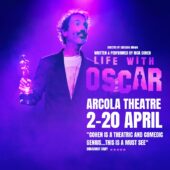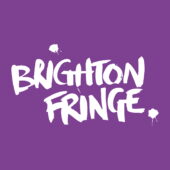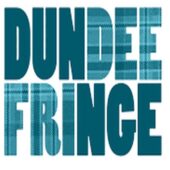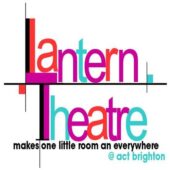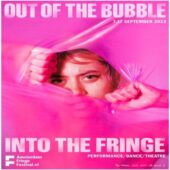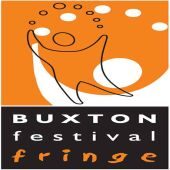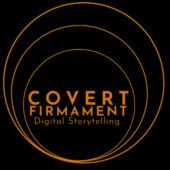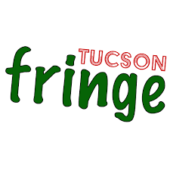Brighton Fringe 2013
Low Down
A play about the nature of relationships, the tension between partners and friends, and whether love can and should survive when one partner changes, in this case quite literally, into a cow. Written by award-winning, Brighton-based playwright Ed Harris and performed by a cast of three recent graduates from E15, it has great acting from Zach Wilson and some nice comic moments, but struggles to get its point across.
Review
Owen was a promising musician, but now he works in a call centre. One morning he comes into the kitchen to find his girlfriend, Holly, sniffing a flower he has brought back from a drunken spree the night before. The kitchen table has disappeared and a calf has mysteriously turned up in the sink overnight. Not only that, but Holly has begun to show symptoms of turning a little bovine herself. Meanwhile – to mix farmyard metaphors a little – his best friend, Thom, is trying to persuade him to quit the job and get back on the horse musically.
Zach Wilson was fantastic as Owen, giving a compelling portrayal of a guy who is trying very hard to be nice and positive, attempting to keep everyone happy, yet underneath struggling with his loss of vocation and a girlfriend with mental health issues. Oli Forsyth was also good as Thom, Owen’s brashly confident best friend.
There were issues with the portrayal of Holly though, who came across as rather one-dimensional and lacking in emotional depth. Her brittle fakeness worked when she was interacting with Thom, who she wasn’t supposed to like, but was strange when she was with Owen, and it made both her and their relationship unconvincing.
Holly could be much improved, both in terms of the script and the acting, with more contrast shown between the girlfriend that Owen had fallen for and the creature she is gradually becoming.
There was a really good scene where Holly enlists Thom’s help to cut off her cow tail and their dislike of each other and rivalry for Owen’s affections merges with a simmering sexual tension, which is offset by Thom’s comedic choice of a Sweeney Todd apron to wear while doing the deed. If this level of emotional complexity could be achieved throughout the play, it would be a vastly better.
In terms of the script, there is a strange lack of curiosity about what is happening. When Holly tells Owen that a baby cow has appeared in the sink he doesn’t seem particularly surprised and he doesn’t ask how it got there, where it came from, or what they should do with it. Likewise, when Owen discovers that Holly has grown a tail, they don’t really ask how or why this is happening or what they can do about it and they don’t try to consult a doctor or a vet.
Apart from the lack of realism in this failure to ask questions or look for solutions in what is obviously a very odd situation, it also means that the themes are left underdeveloped because there is no real discussion about what is happening. The arrival of the calf, in particular, is left seeming rather incidental to the plot of the play.
There is a lot of potential to develop the cow symbolism much more. At one point similarity is drawn between a cow and piano (black and white with spindly legs) was also a nice image and could perhaps be echoed in the set. Thom is also working on a barn restoration and in passing he mentions that it’s meant to look like it is for cows, but nothing more is drawn from that.
There is also obvious parallel between the metaphorical turn of phrase referring to someone ‘being a cow’ and Holly literally turning into a cow. It felt like the transformation should mean something, and there were layers of possibility between her physical change and its possible symbolism in terms of a mental breakdown, but these weren’t made clear enough. The calf also seems to play the role of a baby, coming between Holly and Owen, but because there’s no hint as to where it came from or whether it’s meant to be Holly’s actual baby, this possibility isn’t developed as much as it could be.
Structurally The Cow Play was a bit long and lacking in focus. There was a repetition of the scene where Owen brings Holly a flower, which was perhaps meant to highlight his unchanged feelings towards her, but felt a little clumsy and the third time it was actually confusing as to whether this was happening again or if was a flashback to the beginning of the play.
Without giving away specifics, the play closes with a bit of an anti-climax. There is a dramatic scene that appears to resolve everything and it would have been the obvious place to stop. However, that is followed by one more scene, which confusingly contradicts what has just happened. This additional scene appears to be unnecessary and leaves the play trailing off a little disappointingly when it seems like it was going to go out with a bang.
The set for The Cow Play was quite basic and a strange mixture of real and stylised, with an actual fridge and a sink, but a naïvely painted cooker and stool. This didn’t quite work and would have been better with either one or the other. The lack of a kitchen table, alluded to at the beginning, didn’t seem to serve any purpose in the plot and it was quite awkward in terms of the actors’ interactions, having an empty room with nothing but one stool to sit on.
The stage backdrop was just a black curtain with a window on it, but the window was very high up the wall above everyone’s heads and the ceiling lamp and, which gave the odd impression of a prison cell. It really needed either bigger or placed lower down.
On the front of the sink was a blackboard that said ‘a kitchen’. This appeared to be superfluous until the scene where Thom and Owen are in the barn, where the entire kitchen set was left in situ and the only indication of a change of location was that the blackboard was changed to say ‘a barn’. That really did seem ridiculously lazy, particularly since the barn was presumably meant to be empty, so all that was really needed to stage that scene properly was to remove the kitchen set and leave the stage empty.
Scene changes were not helped either by being covered with a flashing, séance-style light that actually highlighted rather than disguised the movements.
There were few props apart from the baby cow. This was represented by a pink thing that looked a bit like an embryo or a dead piglet. Given that it was quite revolting and so obviously not real, it made it difficult to care what happened to it. The lack of credibility was highlighted by the odd sound it made, sort of like a mewling rather than a moo. Just replacing that with something that actually looked and sounded like a calf would make a huge improvement to the play.
More props could have been added to show Holly’s changes into a cow. She is meant to grow and tail and ears, but there is no visual indication of this. When Owen first notices that Holly has a tail, her back has been to the audience and it could have been a nice touch if the audience could see the tail before Owen does.
There is a lot of potential in The Cow Play. It had some very good acting, a few moments of gold, and a generally good plot that could be developed more to work out the both the characterisation and the symbolism, but would be much improved if the script were shortened and given more focus and some more thought was put into the staging and visual appearance of the show.
Show Website
No website
